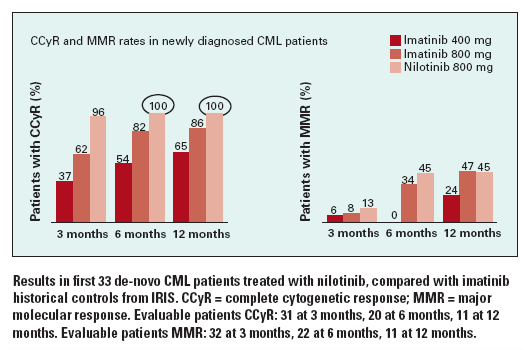Intensive imatinib/chemo ups EFS in pediatric Ph+ ALL
ATLANTA-Treatment with imatinib (Gleevec) plus high-dose chemotherapy significantly improved 2-year event-free survival in children with Ph+ acute lymphoblastic leukemia.
ATLANTA-Treatment with imatinib (Gleevec) plus high-dose chemotherapy significantly improved 2-year event-free survival in children with Ph+ acute lymphoblastic leukemia. Kirk R. Schultz, MD, of the British Columbia Children’s Hospital at the University of British Columbia, Vancouver, presented these results at ASH 2007 (abstract 4) on behalf of the Children’s Oncology Group.
“At the most intensive dosing of imatinib,” Dr. Schultz said, “the survival rate at 2 years had essentially doubled from that seen previously in historical controls.”
In the COG AALL0031 study, imatinib was administered at a dose of 340 mg/m2 over an increasing time period in combination with an intensive chemotherapy regimen, and followed by maintenance chemotherapy.
The five cohorts received imatinib as follows:
Cohort 1: 42 days (n = 8)
Cohort 2: 63 days (n = 12)
Cohort 3: 84 days (n = 11)
Cohort 4: 126 days (n = 12)
Cohort 5: 280 days (n = 50)
A bone marrow transplant was performed after the first two cycles post- induction only if an HLA-identical sibling donor was available; otherwise, chemotherapy was continued. Those patients who underwent BMT received imatinib for 6 months, starting 4 to 6 months post-transplant.
A total of 93 patients were entered onto the study; 10 had failed induction therapy and were excluded from the efficacy analysis.
Significantly improved EFS
Outcomes improved with more intensive imatinib exposure: 2-year EFS was 41% for cohorts 1-2, 70% for cohorts 3-4, and 85% for cohort 5. The 2-year EFS for cohort 5 was significantly greater than that observed in previous COG studies using similar chemotherapy regimens without imatinib (38%) (P < .0001) (Figure).
There were 21 HLA-matched sibling transplants and 11 patients who were removed from study for alternative donor transplant. Intent-to-treat analysis indicated that early outcomes were not significantly different for cohort 5 patients who received a matched sibling donor BMT (64%) and those who did not (70%).
In the related-donor BMT group who received 6 months of imatinib therapy after transplantation, the 1-year EFS (95%) was significantly superior to historical control patients from a prior COG protocol who underwent BMT but no imatinib treatment (78%).
Outcomes did not change significantly after removal of patients who received off-protocol alternative-donor BMT for cohort 5 alone or all cohorts. Two-year EFS was 81% for cohort 5, compared with 64% for matched sibling BMT and 70% for off-protocol unrelated donor BMT.
“Patients with Ph+ disease who traditionally have been considered incurable with induction chemotherapy now have hope and a better chance of survival,” Dr. Schultz said.
Potential to change the paradigm?
“This has the potential to change the treatment paradigm in these patients,” Stella M. Davies, MD, told ONI in an interview. Dr. Davies, professor of pediatrics, Cincinnati Children’s Hospital Medical Center, served as one of Dr. Schultz’s co-authors. She called the study results “new and exciting,” but cautioned that it was still very early in the investigation to draw any hard and fast conclusions. The group will continue to monitor the subjects for long-term outcomes, she said.

These study results are a “home run,” said Sharon B. Murphy, MD, director of the Children’s Cancer Research Institute at The University of Texas Health Science Center at San Antonio. “Historically, these kids don’t go into remission. This may signal a new paradigm-treatment without transplant,” she said.
Dr. Murphy also praised the cooperative group effort that led to these promising results. “This is a subset of patient that is biologically and genetically difficult to treat. You can’t do a study like this without a collaborative group effort,” she said. “This is an excellent model of a well-performed clinical trial.”